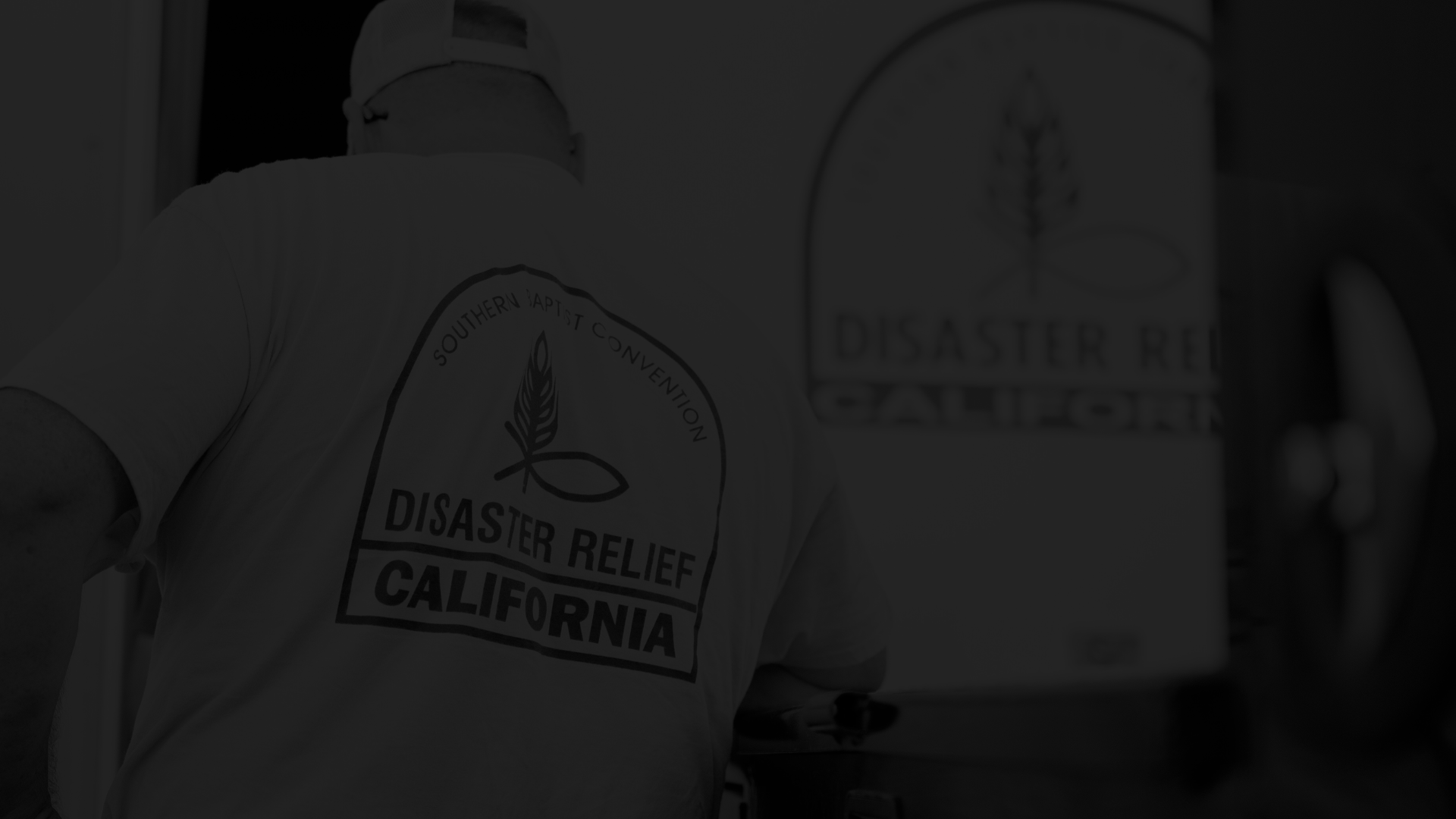MAKE A DIFFERENCE
When disasters happen, people and communities find themselves in immediate need of basic necessities: food, water, shelter, electricity, and fuel, etc. Our network of volunteers and equipment makes it possible for CSBDR to respond quickly anywhere in California, the United States and many places worldwide.

TRAINING DATES
AUGUST 7-8, 2026
Living Valley Church
Yreka, CA
Registration Opening Soon!
AREAS WE PROVIDE TRAINING
-
Required basic training for all volunteers. Will give attendees an understanding of how Southern Baptist Disaster Relief is organized to bring help and hope to people affected by a disaster.
-
This training will provide an overview of the Incident Command System. This is the response management system, used nationwide, by all emergency management and first responder agencies, and by most volunteer organizations, including SBCDR.
-
Provides spiritual and emotional care to volunteers and those impacted by disaster. Skills needed: good people skills, compassion, non-judgmental, able to learn new techniques for helping people in crisis.
Chaplains will also be required to take an OSFA (Operational Stress First Aid) class.
-
Operational Stress First Aid (OSFA) is a unique program to teach psychological first aid to first responders and others who are susceptible to stress injury. The goal of OSFA is to build resiliency and awareness and to keep personnel fully functional. The principles of this class are foundational to all psychological first aid and resources reference legitimate and credible crisis intervention organizations.
-
First class in the ‘feeding skill set’. It will provide an overview of the feeding operation and explain the duties and responsibilities of each position on the feeding team. It will focus on the safe food handling process as outlined by ServSafe.
Volunteers will need to get their Food Handlers Certificate.
-
In this course, learn about feeding operations to ensure the safe storage, handling, preparation and preparation and distribution of food to disaster victims and workers. Nothing in the manual is to be construed as overriding state and local laws and regulations, nor are the guidelines designed to replace appropriate procedures currently being used in state disaster relief training.
-
Discover ministry through the safe and effective cleanup following a disaster. of destroyed hopes, lives and property. Learn; first, the precautions necessary for the safety of the volunteer and second, the tools and methods for efficient clean-up. Also known as Fire Cleanup, Ash Out , and/or Mudout. (Debris removal and cleanup for Wildfires, floods and earthquakes)
-
Learn the safe and effective way to systematically sort through ash, helping residents to find any property that may have survived the fire.
-
This class teaches you what to do as an individual and a team member when you arrive at the burn site. You will be helping homeowners cleanup personal dwellings. We will discuss California’s burn regulations and you will learn that safety is the main concern at a burn site. You will learn how to separate the metals, ash, etc. and the proper way to dispose of them. Skills needed: be in good physical shape, able to work in adverse conditions including hot and cold weather.
-
This class covers the techniques for drying out a house after it has been flooded or just wet from having the roof blown off during a storm. We discuss the possible mold contamination after many floods and the measures needed for decontamination and drying out the building and items in the building. Flood recovery units are prepared to remove flooring, carpet, and sheet rock to help dry out and sanitize the home after a flood. Skills needed: be in good physical shape, able to work in adverse conditions including hot and cold weather.
-
This training covers the use and safety requirements for using a chainsaw during a disaster operation. It discusses the various activities during a disaster operation and including maintenance of the saw, suggestions for brush/limb pulling, and cutting techniques. After this training a date will be scheduled for the field proficiency chainsaw exercise. Operating a saw at home is much different than around a team of people. Safety is critical for the safe operation of all involved. Skills needed: be in good physical shape, able to work in adverse conditions including hot and cold weather. Members must be willing to attend training sessions in chain saw operation and safety and must be able to endure strenuous outdoor work.
-
This class will explain the organization, deployment, work and ministry of the Damage Assessment Team. Damage assessment teams provide decision-making information for a Disaster Relief operation of any size. Team members go ahead of Ashout, chainsaw, and flood recovery teams to evaluate damage and inform follow-up teams on the scope of each job, including equipment that will be needed. Team members should be comfortable meeting people in distress, work well with others, usually in pairs, be able to read and complete paperwork, and understand the work of chainsaw, cleanup, and temporary repair teams. You must have CADR experience serving on a crew in that specialty.
-
This training gives an overview of the procedures that we have in place to provide clean showers and laundry for disaster survivors as well as volunteers aiding in the disaster response. This course is also an orientation to the equipment we have in providing these services. This class will demonstrated how to set-up the shower unit, properly maintain and clean when in continuous use and how to clean and pack up for transport and or winter storage. Part of this class will be in a classroom indoors, part of it will be outside at the Shower Trailer – dress appropriately for the weather.
